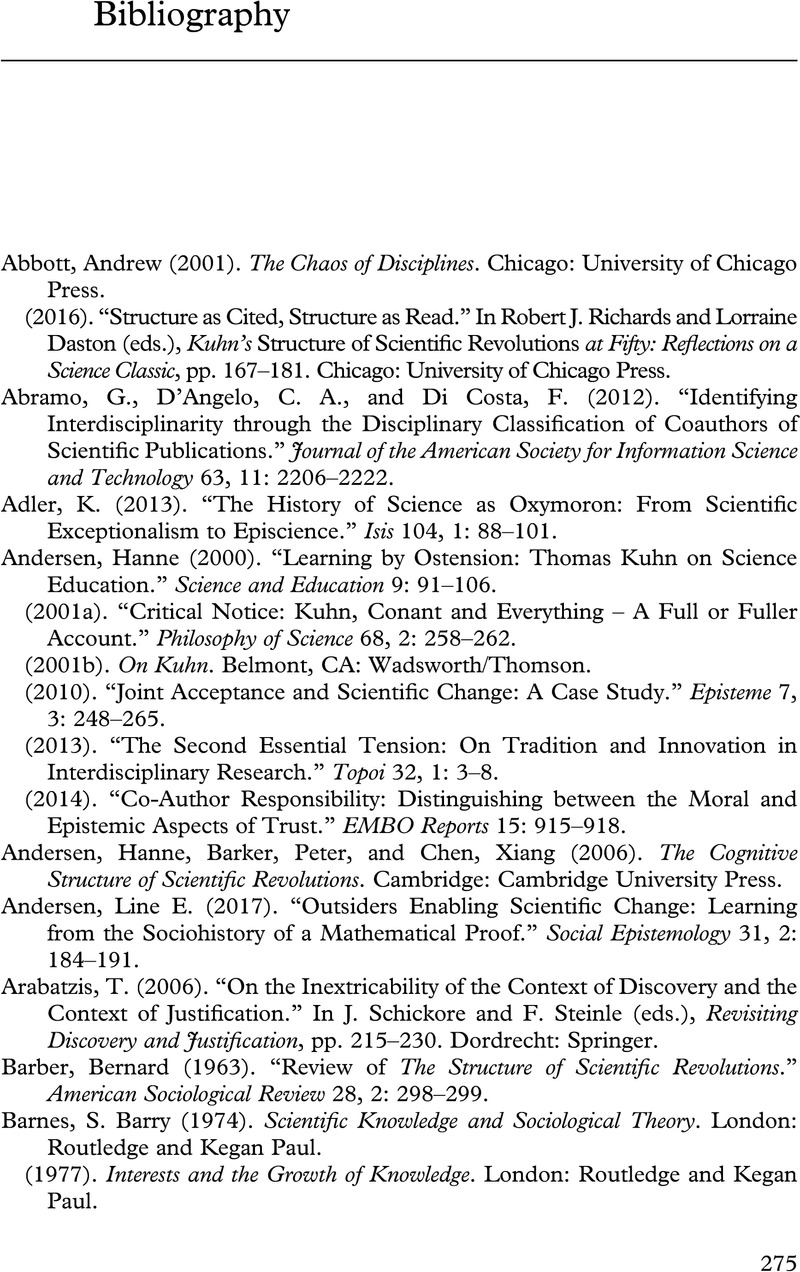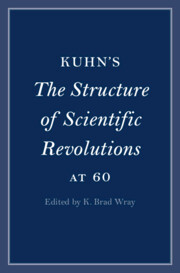Book contents
- Kuhn’s The Structure of Scientific Revolutions at 60
- Cambridge Philosophical Anniversaries
- Kuhn’s The Structure of Scientific Revolutions at 60
- Copyright page
- Dedication
- Contents
- Figures
- Tables
- Contributors
- Acknowledgments
- Abbreviations
- Introduction
- Part I Writing Structure
- Part II Normal Science and Science Education
- Part III Incommensurability, Progress, and Revolutions
- Part IV Kuhn’s Impact on the Philosophy, Sociology, and History of Science
- Bibliography
- Index
- References
Bibliography
Published online by Cambridge University Press: 05 January 2024
- Kuhn’s The Structure of Scientific Revolutions at 60
- Cambridge Philosophical Anniversaries
- Kuhn’s The Structure of Scientific Revolutions at 60
- Copyright page
- Dedication
- Contents
- Figures
- Tables
- Contributors
- Acknowledgments
- Abbreviations
- Introduction
- Part I Writing Structure
- Part II Normal Science and Science Education
- Part III Incommensurability, Progress, and Revolutions
- Part IV Kuhn’s Impact on the Philosophy, Sociology, and History of Science
- Bibliography
- Index
- References
Summary

- Type
- Chapter
- Information
- Kuhn's The Structure of Scientific Revolutions at 60 , pp. 275 - 300Publisher: Cambridge University PressPrint publication year: 2024

